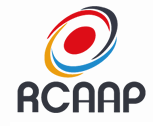Inteligência artificial aplicada a hidrólise enzimática da lactose: melhorando o controle dos processos industriais
DOI:
https://doi.org/10.5433/1679-0359.2022v43n4p1637Palavras-chave:
Beta-galactosidase, Crioscopia, HPLC, Inteligência artificial, Lactose.Resumo
O principal carboidrato do leite é a lactose e a sua absorção ocorre devido à hidrólise enzimática, gerando glicose e galactose. A intolerância à lactose é a redução da capacidade de hidrólise intestinal devido à hipolactasia, gerando a necessidade do consumo de alimentos lácteos com baixo teor deste carboidrato. As enzimas beta-galactosidase são utilizadas nas indústrias de laticínios para hidrolisar a lactose, proporcionando ao consumidor intolerante a possibilidade de ingerir os produtos lácteos sem prejuízos à saúde. Para quantificar o conteúdo de carboidratos resultante da hidrólise enzimática, são utilizados métodos analíticos alternativos e oficiais. O objetivo deste estudo foi avaliar a hidrólise enzimática de duas enzimas industriais distintas produzidas pelos microrganismos Bacillus licheniformis e Kluyveromyces lactis, através de três métodos analíticos: método enzimático, crioscopia e HPLC. A inteligência artificial foi utilizada para melhorar o controle dos processos industriais. Após a adição das enzimas ao leite desnatado, foi realizada a cinética de tempo coletando as amostras no tempo 0, a cada 10 minutos até completar 1 hora de reação e a cada 30 minutos até o fechamento das 5 horas de reação de hidrólise. Em 97% dos casos observados a diminuição da concentração de lactose por HPLC acompanhou o aprofundamento do ponto crioscópico. As medições de glicose por absorbância e HPLC foram correlacionadas (r = 0,79; p < 0,01), mas não concordantes (p < 0,01). Concluiu-se que, por meio da inteligência artificial, é possível estimar indiretamente a concentração de lactose a partir de um algoritmo que associa a crioscopia e a concentração de glicose.Downloads
Referências
Beloti, V. (2015). Fatores que interferem na quantidade e composição do leite produzido. In V. Beloti, R. Tamanini, L. A. Nero, M. A. S., Moreira, L. C. C., Silva, R. da, Fagnani, & K. T. M. G. Reis (Eds.), Leite: obtenção, inspeção e qualidade (Cap. 2, pp. 35-50). Londrina.
Borin, A., Ferrão, M. F., Mello, C., Maretto, D. A., & Poppi, R. J. (2006). Least-squares support vector machines and near infrared spectroscopy for quantification of common adulterants in powdered milk. Analytica Chimica Acta, 579(1), 25-32. doi: 10.1016/j.aca.2006.07.008
Brito, A. B. N., & Giulietti, M. (2007). Study of lactose crystallization in water-acetone solutions. Crystal Research and Technology, 42(6), 583-588. doi: 10.1002/crat.200610867
Churakova, E., Peri, K., Vis, J. S., Smith, D. W., Beam, J. M., Vijverberga, M. P., Stora, M. C., & Winter, R. T. (2019). Accurate analysis of residual lactose in low-lactose milk: Comparing a variety of analytical techniques. International Dairy Journal, 96, 126-131. doi: 10.1016/j.idairyj.2019.02.020
Dutra-Rosolen, M., Gennari, A., Volpato, G., & Volken de Souza, C. F. (2015). Lactose hydrolysis in milk and dairy whey using microbial beta Galactosidases. Enzyme Rsearch, 2015, 1-7. doi: 10.1155/2015/806 240
Garballo-Rubio, A., Soto-Chinchilla, J., Moreno, A., & Zafra-Gómez, A. (2018). Determination of residual lactose in lactose-free cow milk by hydrophilic interaction liquid chromatography (HILIC) coupled to tandem mass spectrometry. Journal of Food Composition and Analysis, 66(1), 39-45. doi: 10.1016/j.jfca. 2017.11.006
Gonzaga, N., Watanabe, L. S., Mareze, J., Madeira, T. B., Tamanini, R., Rios, E. A., Nixdorf, S. L., & Beloti, V. (2019). Green method using water for lactose and lactulose extraction and determination in milk by high-performance liquid chromatography with refractive index detection. LWT - Food Science and Technology, 113, 1-6. doi: 10.1016/j.lwt.2019.108288
Husain, Q. (2010). Beta Galactosidases and their potential applications: a review. Critical Reviews in Biotechnology, 30(1), 41-62. doi: 10.3109/07388550903330497
Jaganathan, A., & Kuppuraj, S. (2016). Artificial neural networks methods for predicting the performance and process in the milk industry. International Research Journal of Engineering and Technology, 3(11), 1127-1132.
Mattar, R., Mazo, D. F. de C., & Carrilho, F. J. (2012). Lactose intolerance: diagnosis, genetic and clinical factors. Clinical and Experimental Gastroenterology, 2012(5), 113-121. doi: 10.2147/CEG.S32368
Ministério da Agricultura, Pecuária e Abastecimento (2019). Manual de métodos oficiais para análise de alimentos de origem animal. Brasília: Secretaria de Defesa Agropecuária, 2019. https://www.gov.br/ agricultura/pt-br/assuntos/laboratorios/credenciamento-e-laboratorios-credenciados/legislacao-metodos-credenciados/arquivos-metodos-da-area-poa-iqa/ManualdeMtodosOficiaisparaAnlisedeAlimentosde OrigemAnimal2ed.pdf
Moretti, M. M. S., Perrone, O. M., Nunes, C. D. C. C., Taboga, S., Boscolo, M., Silva, R., & Gomes, E. (2016). Effect of pretreatment and enzymatic hydrolysis on the physical chemical composition and morphologic structure of sugarcane bagasse and sugarcane straw. Bioresource Technology, 219, 773-777. doi: 10.1016/ j.biortech.2016.08.075
Morlock, G. E., Morlock, L. P., & Lemo, C. (2014). Streamlined analysis of lactose free dairy products. Journal of Chromatography A, 1324, 215-223. doi: 10.1016/j.chroma.2013.11.038
Nivetha, A., & Mohanasrinivasan, V. (2017). Mini review on role of Beta galactosidase in lactose intolerance. IOP Conference Series: Materials Science and Engineering, 263(2), 1-5. doi: 10.1088/1757-899X/263/ 2/022046
Resolução da Diretoria Colegiada n. 135, de 8 de fevereiro de 2017. Altera a Portaria SVS/MS nº 29, de 13 de janeiro de 1998, que aprova o regulamento técnico referente a alimentos para fins especiais, para dispor sobre os alimentos para dietas com restrição de lactose. https://www.in.gov.br/materia/-/asset_publisher/ Kujrw0TZC2Mb/content/id/20794561/do1-2017-02-09-resolucao-rdc-n-135-de-8-de-fevereiro-de-2017 -20794490
Resolução da Diretoria Colegiada n. 136, de 8 de fevereiro de 2017. Estabelece os requisitos para declaração obrigatória da presença de lactose nos rótulos dos alimentos. https://www.in.gov.br/materia/-/asset_ publisher/Kujrw0TZC2Mb/content/id/20794620/do1-2017-02-09-resolucao-rdc-n-136-de-8-de-fevereiro-de-2017-20794494
Storhaug, C. L., Fosse, S. K., & Fadnes, L. T. (2017). Country, regional, and global estimates for lactose malabsorption in adults: a systematic review and meta-analysis. The Lancet Gastroenterology and Hepatology, 2(10), 738-746. doi: 10.1016/S2468-1253(17)30154-1
Trani, A., Gambacorta, G., Loizzo, P., Cassone, A., Fasciano, C., Zambrini, A. V., & Faccia, M. (2017). Comparison of HPLC-RI, LC / MS-MS and enzymatic assays for the analysis of residual lactose in lactose free milk. Food Chemistry, 233, 385-390. doi: 10.1016/j.foodchem.2017.04.134
Yan, W. J., Chen, X., Akcan, O., Lim, J., & Yang, D. (2015). Big data analytics for empowering milk yield prediction in dairy supply chains. Proceeding of the 2015 IEEE International Conference on Big Data (Big Data), Santa Clara, CA, USA.
Downloads
Publicado
Como Citar
Edição
Seção
Licença
Copyright (c) 2022 Semina: Ciências Agrárias

Este trabalho está licenciado sob uma licença Creative Commons Attribution-NonCommercial 4.0 International License.
Semina: Ciências Agrárias adota para suas publicações a licença CC-BY-NC, sendo os direitos autorais do autor, em casos de republicação recomendamos aos autores a indicação de primeira publicação nesta revista.
Esta licença permite copiar e redistribuir o material em qualquer meio ou formato, remixar, transformar e desenvolver o material, desde que não seja para fins comerciais. E deve-se atribuir o devido crédito ao criador.
As opiniões emitidas pelos autores dos artigos são de sua exclusiva responsabilidade.
A revista se reserva o direito de efetuar, nos originais, alterações de ordem normativa, ortográfica e gramatical, com vistas a manter o padrão culto da língua e a credibilidade do veículo. Respeitará, no entanto, o estilo de escrever dos autores. Alterações, correções ou sugestões de ordem conceitual serão encaminhadas aos autores, quando necessário.















